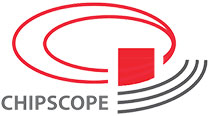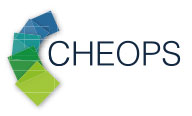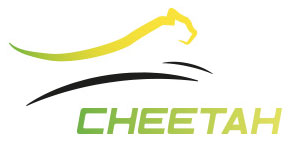EUROPEAN PROJECTS
CHIPSCOPE
- Details
- Category: EUROPEAN PROJECTS
Overcoming the Limits of Diffraction with Superresolution Lighting on a Chip
Grant agreement 737089 in H2020
ChipScope will revolutionize optical microscopes with superresolution capabilities, making them chip-sized, convenient, affordable and ubiquitously available, not only for laboratories working in manifold research fields, but also in everyday lilfe. During the project, very small LEDs of 50 nm (this is 1000 times smaller than the diameter of a human hair) will be developed and used as light sources for a new microscope which will be integrated on a chip. The fundamental difference with conventional optical microscopy will be that the illumination is made by extremely small individual light sources instead of a wide illumination field and tiny detectors in the camera. This allows super-resolution (<50nm) optical microscopy, which could be used to investigate extremely small structures as viruses, DNA or living cells, in real time.
MOSTOPHOS
- Details
- Category: EUROPEAN PROJECTS
Modelling stability of organic phosphorescent light-emitting diodes
Grant agreement 646259 in H2020-NMP2014/2015
The idea of this project is to integrate various levels of theoretical materials characterization into a single software package, to streamline the research workflows in order for the calculations to be truly usable by materials engineers, complementary to experimental measurements. Towards this goal, this project brings together the academic and industrial expertise of the leading experimental and theoretical groups in the field of organic semiconductors.
CHEOPS
- Details
- Category: EUROPEAN PROJECTS
Production technology to achieve low Cost and Highly Efficient phOtovoltaic Perovskite Solar cells
Grant agreement 653296 in H2020-LCE-2014-2015/H2020-LCE-2015-1
The overarching aim of the CHEOPS project is to develop highly performing (up to 29% efficiency) and reliable photovoltaic (PV) cells and modules based on the perovskite (PK) technology with a potential for ultra-low cost of 0.25-0.3 €/Wp for single junction modules and of 0.35-0.4 €/Wp for PK/silicon tan-dem modules.
GRAPHENECORE1
- Details
- Category: EUROPEAN PROJECTS
Graphene-based disruptive technologies
Grant agreement 696656 in H2020-Adhoc-2014-20
This project is the second in the series of EC-financed parts of the Graphene Flagship. As time progresses, the centre of gravity of the Flagship moves towards applications, which is reflected in the increasing importance of the higher - system - levels of the value chain. In this first core project the main focus is on components and initial system level tasks.
GRAPHENE
- Details
- Category: EUROPEAN PROJECTS
Graphene-Based Revolutions in ICT And Beyond
Grant agreement 604391 for Combination of CP & CSA.
The Graphene Flagship is a 10 year research and innovation endeavour with a total project cost of 1,000,000,000 euros, funded jointly by the European Commission and member states and associated countries.
This Flagship aims to take graphene and related layered materials from a state of raw potential to a point where they can revolutionize multiple industries - from flexible, wearable and transparent electronics, to new energy applications and novel functional composites. The mission of the Graphene Flagship is to take graphene and related layered materials from a state of raw potential to a point where they can revolutionise multiple industries. This will bring a new dimension to future technology - a faster, thinner, stronger, flexible, and broadband revolution. Our program will put Europe firmly at the heart of the process, with a manifold return on the EU investment, both in terms of technological innovation and economic growth. To realise this vision, we have brought together a larger European consortium with about 150 partners in 23 countries.
CHEETAH
- Details
- Category: EUROPEAN PROJECTS
Cost-reduction through material optimisation and Higher EnErgy outpuT of solAr pHotovoltaic modules
Integrate Research Program CHEETAH (Grant Agreement 609788), FP7-ENERGY-2013-IRP.
In CHEETAH, all EERA-PV members will, through collaborative R&D activities:
- focus on solving specific bottlenecks in the R&D Joint Program of EERA-PV
- strengthen the collaboration between PV R&D performers in Europe through sharing of knowledge, personnel and facilities
- accelerate the implementation of developed technologies in the European PV industry
DESTINY
- Details
- Category: EUROPEAN PROJECTS
DyE SensiTIzed solar cells with eNhanced stabilitY
The Destiny project will tackle major challenges in the development of stable dye-sensitized solar cells, DSC. DSCs offer exciting possibilities for applications in building integrated photovoltaics and consumer electronics. This Marie Curie Initial Training Network is focused on fundamental research to understand the causes of degradation with the aim of finding ways of enhancing cell and module life time and stability without sacrificing performance and scalability.
NEWLED
- Details
- Category: EUROPEAN PROJECTS
Nanostructured Efficient White LEDs based on short-period superlattices and quantum dots
The NEWLED project aims to develop a new generation of white light-emitting LED lights, which would be much more efficient than any existing light bulbs. Values of 50 to 60% overall efficiency with a conversion of greater than 200 lm/W in the exploited warm white LEDs are targeted as well as the realisation of a colour rendering index (CRI) of greater than 90. Widespread use of such LEDs would reduce global energy consumption by approximately 10% and massively reduce CO2 emissions. The effort to produce highly efficient white LEDs will see the project examine every stage of the LED fabrication process, from developing new knowledge on the control of semiconductor properties on a near-atomistic level to light mixing and heat management.
PRESS REVIEW
HYMEC
- Details
- Category: EUROPEAN PROJECTS
HYbrid organic/inorganic Memory elements for integration of Electronic and photonic Circuitry
The objectives of the project "Hybrid organic/inorganic memory elements for integration of electronic and photonic circuitry" are to resolve fundamental issues of materials science and to realize new hybrid inorganic/organic devices with functionality far beyond current state-of-the-art.







